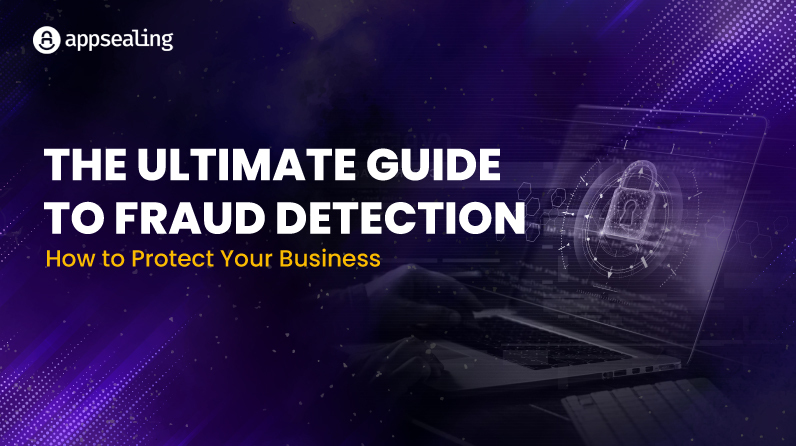The need for robust fraud detection mechanisms has never been greater in the ever-evolving landscape of finance and technology. The methods used by fraudsters are changing as technology is advancing. Security adversaries are relentless, from sophisticated cyberattacks to clever scams. As part of our research, we pursue cutting-edge technologies, machine learning algorithms, and artificial intelligence models that will help us fight financial fraud.
What is Fraud Detection?
Fraud detection is mainly about stopping the criminals from gaining monetary advantages through deception. In the world of online businesses, fraud, scams, and unethical behaviour can cause serious damage. To protect business’s interest, companies need ways to spot and prevent fraud before it causes harm.
There are a number of measures that can be taken to minimise the damage caused by fraudsters once the fraud has been detected.
The first and foremost task is to find where the risks are. Once you do so, you can stop fraud either automatically or manually. This often involves using tools such as fraud detection software, RiskOps tools, and various other strategies to manage risks effectively. It’s a proactive way to safeguard your business against potential financial threats.
Fraud Prevention vs. Fraud Detection
Financial institutions are committed to safeguarding their customers by investing in fraud prevention and detection. These cybersecurity practices have distinct purposes:
Fraud detection:
- Takes place during a fraud attempt.
- Seeks to minimise the impact of ongoing fraud.
Fraud prevention:
- Happens before any fraud attempt.
- Aims to minimise the chances of fraud in future.
In addition to minimising false alarms, advanced fraud detection tools improve user satisfaction and enhance fraud management teams’ efficiency.
What Are the Common Types of Fraud?
Fraud is a versatile threat that can take various forms, adapting to various business models. Some common type of frauds include-
Fake Account
Fraudsters create new accounts using falsified information or stolen IDs. This type of fraud saw a rise during the pandemic, particularly in the industries like FX trading.
Credit Card Fraud
Criminals steal credit card numbers and use them to make unauthorised purchases. As a result, businesses are often faced with chargebacks, which are costly to handle.
Affiliate Fraud
Marketing partnership can go awry when affiliates deliberately send low-quality traffic to your website. There is a high prevalence of affiliate marketing fraud in industries like iGaming, where unscrupulous affiliates target pay-per-click and pay-per-lead models.
Account Takeover Fraud
The more sophisticated attackers take advantage of phishing attacks to steal the identity of existing users and hijack their accounts. The goal remains the same, either stealing money or personal information of the account holder.
Some of the other common frauds include bonus abuse, friendly fraud, and refund fraud.
Effective Strategies for Fraud Detection and Prevention
When it comes to fraud detection, two methods can be used: statistical data analysis, and artificial intelligence (AI).
Statistical analysis involves using calculations and models to understand data, while AI methods include data mining, neural networks, machine learning, and pattern recognition to detect fraud patterns.
These techniques help identify unusual patterns and suspicious transactions by analysing large datasets, making it easier to catch fraudsters and protect against financial losses.
A robust fraud detection and prevention program goes beyond just relying on technological tools. Some of the other key elements include:
Anti-Fraud Education and Training
Educating employees and customers against fraud is a potent tool. It empowers users to recognize suspicious activities, reducing risks like account takeovers, phishing, and social engineering attacks.
User Fingerprinting
Gathering comprehensive user data is pivotal. For example, digital footprints can help track users and detect anomalies, social media lookups can reveal suspicious behaviour, and AML (Anti Money Laundering) checks can identify high-risk users.
Custom Rules and Risk Scoring
A flexible set of fraud rules adapts to evolving fraud strategies, from IP blocking to complex action analysis. Risk scores automate user action approvals, rejections, or reviews, enhancing precision and efficiency.
Transaction Monitoring
One can easily detect fraud at the payment stage. Data collection during real-time payments helps identify invalid cards and suspicious transactions, such as mismatches between the card and its country of origin.
Machine Learning
As historic data is analysed, patterns can be extracted, risk rules can be recommended, and accuracy can be improved. ML systems excel with large datasets and unveil hidden insights beyond manual analysis.
Fraud Detection Team
As much as advanced softwares can come in handy, human interference is also equally important when it comes to detecting fraud. They ensure swift action and expertise in handling suspicious activities.
Training and Awareness
To prevent fraud, educating employees at all levels, including top executives, is important. If everyone in the organisation understands the prevalent fraud risks and potential security threats, then their collective effort will help in safeguarding the company’s interest.
Be Aware of the Policies and Procedures
Risk thresholds need to be determined for various types of transactions and customer profiles. A predefined set of parameters streamlines internal processes and significantly reduces manual review resources, thereby improving fraud prevention.
Continuous Improvement
Fraud prevention practices should be dynamic and adaptable. To ensure ongoing compliance, regular internal assessments and external audits are essential. Maintaining high security standards requires an iterative approach to stay ahead of emerging threats.
Challenges of Fraud Detection and Prevention
In business operations, fraud is unavoidable. To overcome it, you need to identify your company’s most prevalent problems, create resources to deal with them, and then implement the most effective strategies while adhering to regulatory guidelines.
False Positives
To optimise your business, it’s vital to balance risk thresholds and prevent false positives in fraud detection processes, as mistaking legitimate customers for fraudsters can lead to unhappy customers, reputational damage, and lost sales.
Evolving Risks
Staying ahead of continuously evolving fraudster tactics, identifying high-risk threats to revenue streams, and proactively planning for future risks are key components of effectively preventing fraud.
Optimising Customer Experiences
Adding fraud prevention measures and collecting specific personal data may disrupt the customer experience if your industry requires it, so balancing security with a seamless checkout process is crucial. SEON, for instance, analyses passive information to verify identities with minimal friction.
Data Quality
Tailoring AI-driven fraud prevention systems to your company’s needs, organising customer data efficiently, and maintaining data cleanliness can uncover solutions to address these challenges effectively.
Selecting Fraud Detection & Prevention Features
While considering which system to integrate, there are some key points to keep in mind-
Customizable Rules
Some platforms like SEON offer full customization, enabling you to customise risk rules based on your company’s specific needs, along with machine learning options.
Machine Learning
Machine learning uses your business data to create precise risk rules. Whitebox solutions aim to explain transactions in a way that is easy for humans to understand, such as with decision trees. Blackbox solutions delve into intricate details that are not easily understood by humans.
User-Friendly Interface
Often overlooked, user experience can greatly impact the effectiveness of a fraud prevention solution. Choosing a product with an intuitive interface is essential for your team’s productivity.
Monitoring Key Metrics
A good fraud prevention tool should offer reports and analytics to track its efficiency. The best solutions use machine learning to provide insights into your data, helping you optimise workflows and track metrics like detection accuracy and ROI.
Pricing Model
Consider the cost of fraud prevention as it can be significant. The pricing model of a software product is as important as its features, especially in a highly competitive market.
Take fraud prevention to the next level with AppSealing. Our tailored solutions can strengthen the security of your app, simplify compliance, and help you increase revenues. Take action now to safeguard your success!






